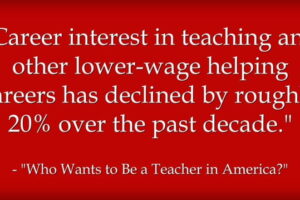
Short-Term Credentials Bolster Enrollment Boom
Computer science enrollment is down, while health professions are up.
Photo illustration by Justin Morrison/Inside Higher Ed | gorodenkoff/iStock/Getty Images | xavierarnau/E+/Getty Images
College enrollment continued to grow this fall, increasing by 2 percent compared to fall 2024, according to preliminary fall data released by the National Student Clearinghouse Research Center.
The biggest gains came from students studying for short-term credentials, whose ranks increased 6.6 percent, while the number of students enrolled in associate and bachelor’s degree programs rose 3.1 percent and 1.2 percent, respectively. Enrollment also grew faster at community colleges, which experienced a 4 percent increase, than at public (1.9 percent) and private (0.9 percent) four-year institutions.
Total graduate enrollment was stagnant, however, and the number of master’s students actually decreased by 0.6 percent.
Year-over-year enrollment growth across the board was more modest this year than last, when overall enrollment increased by 3.1 percent and short-term credentials were up 7.6 percent. And a major that has long been one of the most popular in the U.S.—computer science—saw massive declines at both the undergraduate and graduate level.
It’s the latest iteration of the NSCRC’s preliminary fall metrics report, which the organization started during the COVID-19 pandemic, and includes data from about half of all institutions that submit their numbers to the Clearinghouse. More comprehensive enrollment information will be released in subsequent reports in January and May, after the rest of the institutions provide their data.
The forthcoming reports will include figures related to international student enrollment, following months of uncertainty about whether and how severely visa pauses and delays over the summer impacted these students’ ability to study in the U.S. this fall. They will also provide information on dual enrollment, though today’s report shows a 6 percent increase in college students under age 17, many of whom are likely dual-credit students.
The trends shown in the NSCRC report align with growing interest in short-term credential programs, which can include everything from welding to paralegal certifications, from learners who believe these programs promise better job outcomes for less cost than a degree. State governments have also pushed to create new programs and boost enrollment in short-term credential programs, and the federal government recently passed legislation in the One Big Beautiful Bill Act to allow Pell Grants to be used for these programs.
The growth in both short-term credential and associate degree enrollments “kind of confirms that there’s growing appetite, more demand from learners for more efficient and direct routes to employment opportunities, which is probably why they find the short-term credential more appealing,” said Joel Vargas, vice president of the education practice at Jobs for the Future. “I think that’s a trend that’s been going this way for a while.”
Vargas also noted increases of 3.3 percent among 25- to 29-year-old students and of 2.7 percent among those over 30, perhaps indicating that colleges are successfully recruiting older learners to make up for the loss of high school graduates following the arrival of the so-called demographic cliff this year. The rise in older students may also indicate that more adults are wanting or needing to update their skill sets amid a changing job market.
The lack of increase in graduate enrollment, on the other hand, comes at a time when slashed research funding and other financial woes have led some programs to freeze or even rescind admissions for this fall—although most of the high-profile cases impacted Ph.D. admissions, not master’s programs.
Computer Science Declines
Despite overall enrollment increases, one major that has been incredibly popular for years—computer science—dropped 7.7 percent this year. That number was even higher for graduate programs, which experienced a 15 percent decline in computer science students this fall.
Carla Brodley, executive director of Northeastern University’s Center for Inclusive Computing, said the decline may not be cause for alarm.
“What I think is happening is we produced so many graduates in computer science that we oversaturated the market,” she said. Now, as students are seeing more and more headlines about layoffs in the technology sector, they may be less interested in pursuing a career in computer science.
Some students may also avoid studying computer science because they are worried that software engineers are vulnerable to losing their jobs to artificial intelligence, she said—even though she does not think the current challenging job market can be attributed to AI.
In the end, she thinks the shift will actually be a boon for most computer science departments, which, in recent years, have had far more students interested in the major than they can accommodate.
“Over all, it’s not a bad thing,” she said. “It’s probably better for most of us if this demand cools down a little bit so we can regroup and give the students the type of attention we like to give them.”
On the other hand, bachelor’s students have demonstrated growing interest in the health professions, which increased by 6.2 percent this year, and engineering, which increased 7.5 percent. At community colleges, the biggest increases were health professions (10.1 percent) and mechanic and repair technician programs (10.4 percent). Some of these degrees have been called “AI-proof” in news articles and on social media, potentially contributing to their popularity.
Enrollment of Black, Hispanic and multiracial students continued to rise this year, while enrollment of white students is down 3.7 percent from last fall. But the biggest jump both this year and last was in students who did not provide their race, amounting to an increase of 45.3 percent over two years from fall 2023 to now. NSCRC researchers urged caution when interpreting data about different demographic groups due to how many students now withhold that data.
Source link


